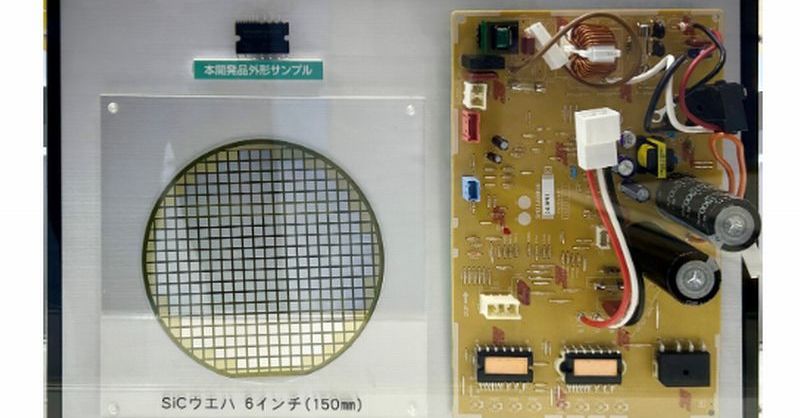Efficient Air Conditioning: Revolutionizing Cooling with SiC-Integrated Power Modules
The quest for energy-efficient cooling solutions is heating up, and a groundbreaking technology is leading the charge: SiC-integrated power modules for air conditioning systems. This innovative approach promises to significantly reduce energy consumption, lower operational costs, and minimize the environmental impact of air conditioning. Let's delve into the details of this exciting development and explore its implications for the future of cooling.
What are SiC-Integrated Power Modules?
Silicon carbide (SiC) is a wide-bandgap semiconductor material that boasts superior properties compared to traditional silicon (Si) in power electronics. SiC power modules, incorporating this material, offer several key advantages:
- Higher Switching Frequencies: SiC devices can switch on and off much faster than silicon-based components, leading to smaller and more efficient inverters.
- Reduced Switching Losses: These faster switching speeds translate directly to lower energy losses during operation.
- Improved Thermal Performance: SiC's high thermal conductivity allows for better heat dissipation, enhancing system reliability and lifespan.
- Smaller Size and Weight: The improved efficiency allows for a reduction in the overall size and weight of the power module, making it ideal for integration into various air conditioning systems.
How SiC Impacts Air Conditioner Efficiency
The integration of SiC power modules into air conditioning systems results in substantial improvements across several metrics:
- Energy Savings: By significantly reducing energy losses, SiC-based systems consume less electricity, leading to lower energy bills for consumers and reduced overall energy consumption.
- Reduced Carbon Footprint: Lower energy consumption directly translates to a smaller carbon footprint, contributing to environmental sustainability efforts.
- Improved Reliability: The enhanced thermal performance and reduced stress on components improve the overall reliability and lifespan of the air conditioning unit.
- Enhanced Performance: Faster switching speeds and improved efficiency can lead to quicker cooling and more precise temperature control.
The Market for SiC-Integrated Power Modules in Air Conditioning
The market for SiC-based power modules is experiencing rapid growth, driven by the increasing demand for energy-efficient cooling solutions. This trend is particularly pronounced in:
- Residential Air Conditioning: Homeowners are increasingly seeking energy-efficient solutions to reduce their environmental impact and lower utility bills.
- Commercial Air Conditioning: Businesses are looking for ways to minimize operating costs and improve the efficiency of their HVAC systems.
- Automotive Air Conditioning: The automotive industry is adopting SiC technology to improve the fuel efficiency of electric and hybrid vehicles.
Key Players and Future Developments
Several major players in the power electronics and semiconductor industries are actively developing and deploying SiC-integrated power modules for air conditioning applications. Ongoing research and development efforts are focused on:
- Cost Reduction: Making SiC technology more affordable to broaden its accessibility.
- Improved Integration: Developing more compact and easily integrable modules.
- Enhanced Reliability: Further improving the robustness and longevity of SiC-based systems.
Conclusion: A Cooler Future with SiC
SiC-integrated power modules represent a significant advancement in air conditioning technology. Their superior performance and energy efficiency promise a cooler, more sustainable future, benefiting both consumers and the environment. As the technology continues to mature and costs decrease, we can expect to see widespread adoption across various air conditioning applications. This technological leap signifies a crucial step towards a more efficient and eco-friendly cooling landscape.
Learn more about the latest advancements in power electronics by subscribing to our newsletter! (This is a subtle CTA)
